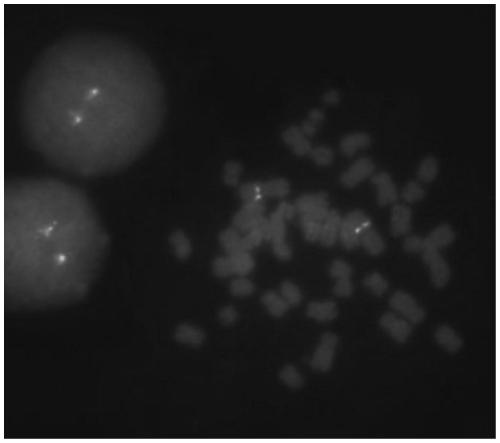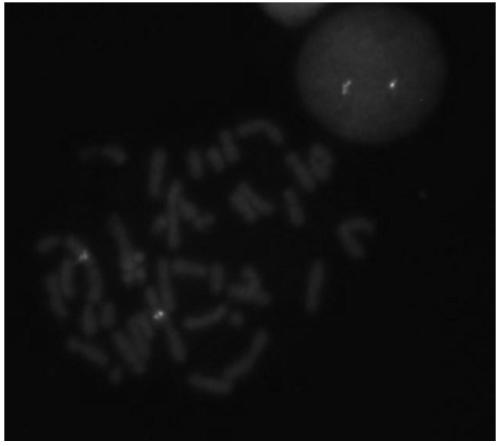Leukemia MEF2D gene disruption probe detection kit
A technology of gene breakage and kit, which is applied in recombinant DNA technology, microbial measurement/testing, DNA/RNA fragments, etc., can solve the problems of expensive detection, complicated operation, and long time, so as to achieve optimal treatment and prognosis evaluation, The effect of strong fluorescent signal and high accuracy
- Summary
- Abstract
- Description
- Claims
- Application Information
AI Technical Summary
Problems solved by technology
Method used
Image
Examples
Embodiment 1
[0046] Embodiment 1, MEF2D gene fragmentation detection probe, preparation and use method of kit
[0047] Technical thinking of the present invention is:
[0048] Fluorescence in situ hybridization is a method that uses a probe labeled with fluorescein to specifically combine with chromosomes and (or) gene loci, and observes the type of fluorescent signal through a fluorescence microscope to detect changes in chromosomes and corresponding genes. It is safe and economical. , fast, high sensitivity, strong detection signal, high hybridization specificity, and can display multiple colors at the same time, etc., and makes up for the defects that traditional methods cannot diagnose interphase cells, complex karyotype cells, and chromosomal microdeletions. At the same time, fluorescence in situ hybridization technology is applied to paraffin-embedded samples for retrospective research, which greatly reduces the requirements for research samples. Based on the rapid development of fl...
Embodiment 2
[0066] Example 2, Practical application of MEF2D gene breakage detection probes and kits
[0067] In this embodiment, the bone marrow of 40 children with clinically confirmed ALL (30 of the 40 children were B-ALL, and 10 were T-ALL; their guardians were informed and agreed) was used as the sample to be tested, and the bone marrow droplet sample was prepared. , use the probe kit in Example 1 to detect whether the MEF2D gene is broken or not, and refer to the method in Step 3 of Example 1 for details.
[0068] The results showed that 2 of the 30 bone marrow cell droplet specimens from clinically diagnosed B-ALL patients met the diagnostic criteria of fluorescence in situ hybridization and were judged to be positive, while the remaining 28 cases were diagnosed as negative. In the bone marrow cell droplet samples of 10 clinically diagnosed T-ALL patients, no gene break signal was detected, and they were judged as negative. figure 2 It is a negative control case of children with ...
PUM
 Login to View More
Login to View More Abstract
Description
Claims
Application Information
 Login to View More
Login to View More - R&D
- Intellectual Property
- Life Sciences
- Materials
- Tech Scout
- Unparalleled Data Quality
- Higher Quality Content
- 60% Fewer Hallucinations
Browse by: Latest US Patents, China's latest patents, Technical Efficacy Thesaurus, Application Domain, Technology Topic, Popular Technical Reports.
© 2025 PatSnap. All rights reserved.Legal|Privacy policy|Modern Slavery Act Transparency Statement|Sitemap|About US| Contact US: help@patsnap.com



